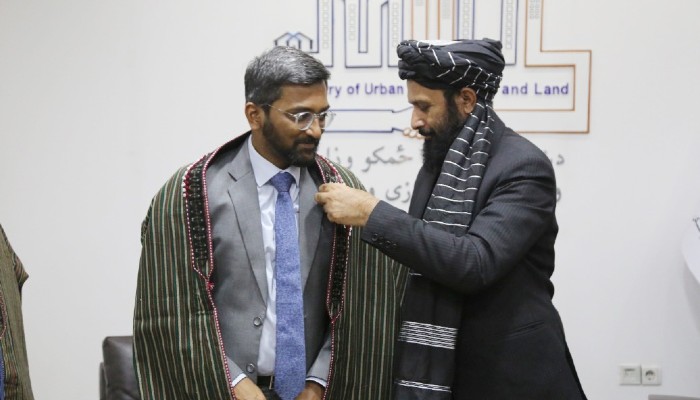China for long has been eyeing to gobble up vast tracts of disputed territories with India and Bhutan
In the wee hours of December 9, China’s military mobilised nearly 300 soldiers to occupy the heights at Yangtse region, which is about 25-km from Tawang tract. This was repulsed by the smaller number of Indian troops, with assistance pouring from near quarters. Indian Defence Minister Rajnath Singh mentioned in a statement that India lost no soldiers but its forces suffered injuries in fisticuffs. On the other hand, at least three Chinese soldiers were reportedly killed and scores of them injured.
We may never get the Chinese casualties figures right as its Central Military Commission Chairman Xi Jinping should notify such toll. Even for the Galwan casualties, China reported four dead after eight months of silence. On the other hand, the Russian TASS news agency reported 45 casualties on the Chinese side, while western sources indicated this to be as high as 120 dead.
China’s foreign ministry spokesman stated that the situation on the border is “generally stable” while the spokesman of China’s Western Theatre Command – which has jurisdiction over the border with India in terms of military operations, said that the Indian troops “illegally cross the line” and that India should “strictly control” its troops.
The Yangtse incident is a part of a series of border incidents for several years now and suggests the dangers of escalation. In the recent past, the instability on the borders between India and China is reflected in the border clashes of 1962, Nathu La and Cho La incident in Sikkim in 1967, Samdurong Chu incident in Arunachal Pradesh in 1987 when China mobilised 200 soldiers north of Arunachal Pradesh, Daulat Beg incident of December 2000 in Ladakh, 2013 Depsang Plains incident in Ladakh, 2014 Chumar incident during the visit of President Xi Jinping to New Delhi, Barahoti incident of China’s helicopter intrusion in the middle sector, Dokhlam incident in Bhutan-China borders and the June 2020 incident at Galwan in Ladakh.
This indicates the increase in the periodicity of border incidents but also to the increasingly violent skirmishes. It is to be noted that such incidents preceded the full-scale war between China and Vietnam in 1979 that left nearly 50,000 Chinese killed.
Many of the border incidents resulted in intensive diplomatic talks to diffuse the situation on the borders. These resulted in various agreements to “manage” the borders and keep the differences on the issue not boil over to skirmishes. Thus, the agreements of 1993, 1996, 2005, 2013 and others ushered in confidence building measures. However, as the fundamental issue of territorial dispute resolution has not been made despite decades of talks, it brought the issue back to square one. China’s assertiveness in recent times is also a major factor for the deterioration of the situation on the borders.
China for long has been eyeing to gobble up vast tracts of disputed territories with India and Bhutan. Its infrastructure development since the 1980s created conducive conditions for easier encroachments. For instance, China’s border patrols could reach the Line of Actual Control within hours, while the Indian side required two to three weeks to reach the peaks, thus exposing vulnerabilities.
In the specific issue of Yangtse, border transgressions by China’s patrols were reported for more than a decade. Incidents in 2013, 2021 and others have been intensive and required a concerted response from India. This region is next to Tawang that China claims since the 6th Dalai Lama hailed from the area. Military domination of the 17,000 feet high peaks provides China with operational advantage in the future.
The visit of President Xi Jinping to Nyingchi prefecture in July last year and his remarks to strengthen border management and security emboldened China’s military further. $23 billion outlays in the current 14th five-year plan for Tibet clearly provides ground-level advantage for its military forces.
China also made other preparations as well to keep the kettle boiling in the border areas. It issued “stapled visas” or denied visas to the residents of Arunachal Pradesh. For instance, in early 2007 China denied a visa to an IAS Officer from Arunachal Pradesh that led to the cancellation of a visit by 107 officers to China. Later, it repeated this to an air force officer hailing from the region. China further escalated the situation by launching “media” and “legal” war – claiming Arunachal Pradesh as “southern Tibet” since mid-2000s or criticising Indian leaders' visit to the region.
China’s strategy is for decoupling of the border issue with that of other bilateral relations such as diplomacy, multipolarity, tourism, economy and others. China’s consideration is that with over 400 million consumers, India is an attractive market that cannot be ignored by a rising China. Moreover, if India is moving closer to the United States, Beijing will think of all doomsday predictions of containment from its southwestern borders. Yet, as directed by its communist party congresses, China must protect its “core interests” such as on the borders with India.
China is also satisfied that India is not exerting pressure on China in the bilateral or international arena. Despite 20 Indian soldiers killed in June 2020, India has not revised its “one China” policy on Tibet, Taiwan, South China Sea or Xinjiang, despite making a few comments. Even though Indian foreign minister Dr S. Jaishankar made a few comments on the unreliability of China and its inability to stick to the border agreements, these remain symbolic protests and do not cost much for Beijing. This situation then needs to be responded with concerted actions with conventional deterrence as the key element.
***Srikanth Kondapalli is Dean of School of International Studies, JNU; views expressed here are his own











 Contact Us
Contact Us
 Subscribe
Subscribe
 News Letter
News Letter
 Instagram
Instagram Youtube
Youtube